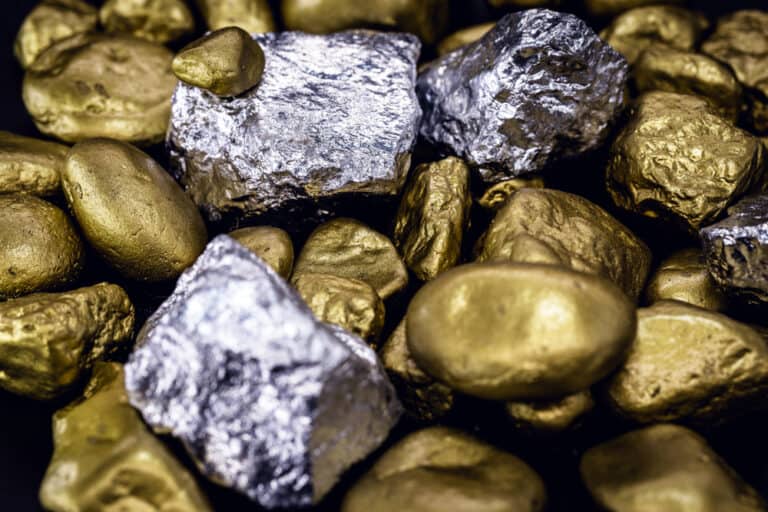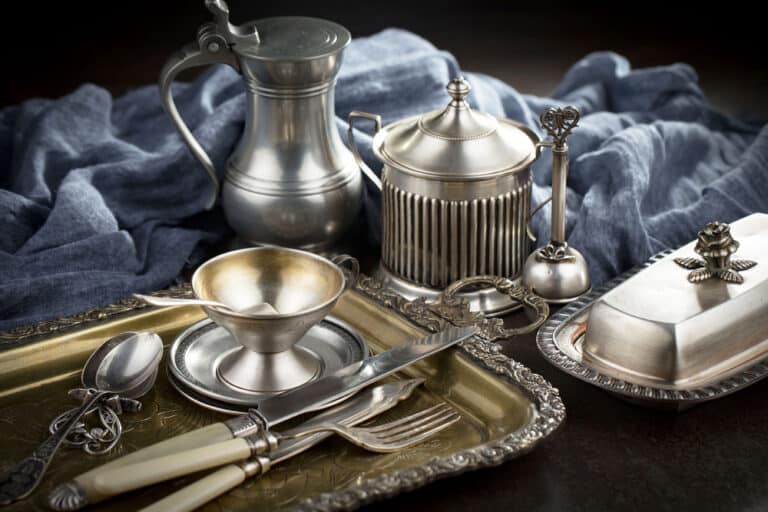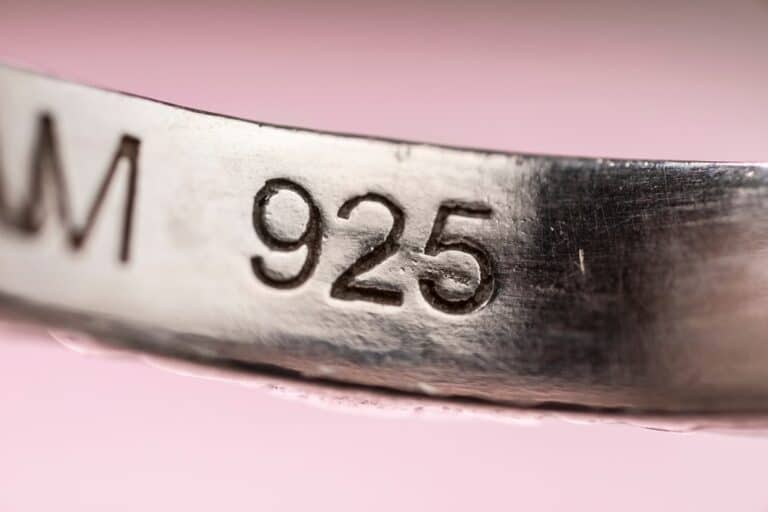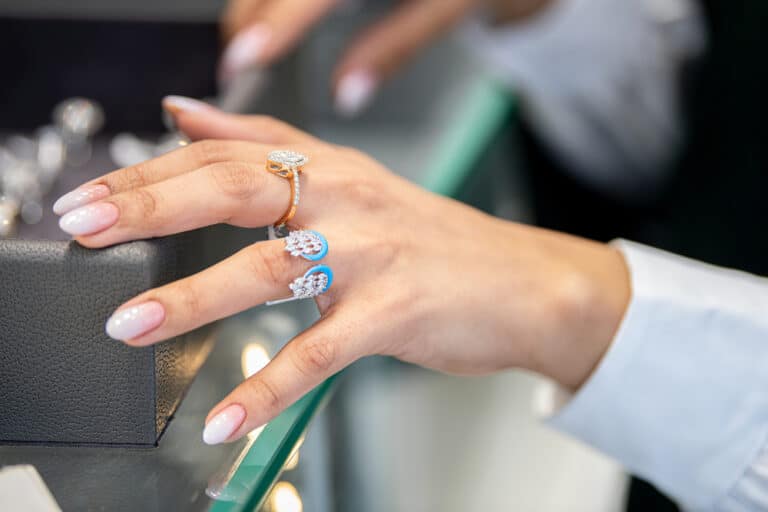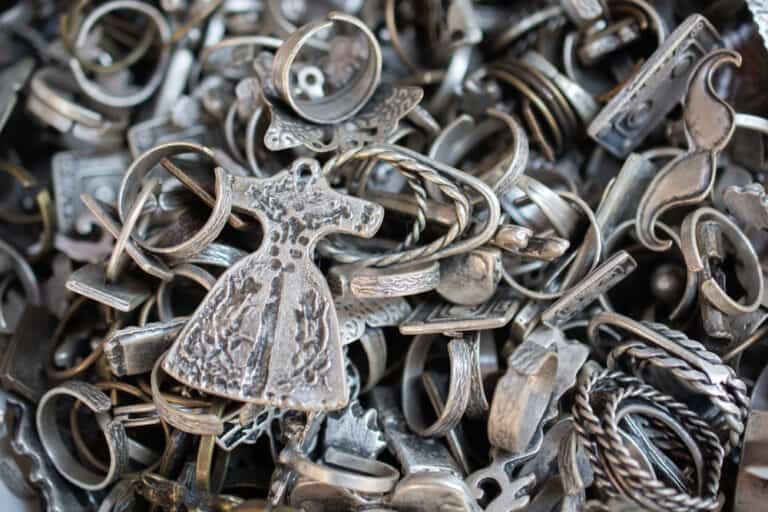If you are exploring the fascinating world of silver jewelry and silverware, you may wonder about the properties of silver and how durable this precious metal is. You know it is pretty soft, and now that has got you thinking whether it is brittle and what that means. So is silver brittle?
Silver is generally the opposite of brittle, being highly ductile and malleable. In other words, it undergoes much plastic deformation instead of fracturing when struck. However, precious silver metal clay can be brittle if improperly fired, and archaeological silver can become brittle.
Although silver is not generally brittle, there is a way of creating jewelry with it can leave it in a more fragile state, and archaeological silver can sometimes be brittle, too. As a result, you should know how your silver item was made. Let’s take a look.
Why Silver Is Somewhat Brittle (And What That Means)
In our daily lives, when we encounter silver, it is in the form of an alloy, usually with copper. It is alloyed with copper (or other metals) because it is too soft for use on its own. Nevertheless, despite being soft, it is not excessively brittle.
The atomic properties of elemental silver mean that it is highly malleable and extremely ductile. Malleability means we can beat silver out into thin sheets without tearing it. It is nearly as malleable as gold and much more malleable than most other metals.
Ductility means drawing silver into long, thin, flexible wires without breaking. Both malleability and ductility are signs of a material that undergoes significant plastic deformation, that is, distortion from its original shape in a smooth, controlled manner without sudden breaking.
Silver displays some brittleness. Brittleness is a property of materials that fracture without much elastic or plastic deformation. Instead, brittle materials absorb only a little energy before suddenly breaking, often with a sharp, snapping sound.
Common examples of brittle materials are glass, fired pottery, and cast iron, all of which are liable to break abruptly or shatter when hit. As you may notice, all of these materials are hard. In contrast, if you hit silver, it will distort but not fracture, showing that it is not very brittle. However, it does display some brittleness.
When assessing how brittle silver is, we should consider Poisson’s ratio and Young’s modulus. Poisson’s ratio is defined as the negative ratio between transverse and axial strain, while Young’s modulus is the axial stress divided by the lateral strain.
A material with a relatively large Poisson’s ratio and relatively small Young’s modulus generally has a low brittleness index and is, therefore, ductile.
Despite being ductile and malleable, silver has a Poisson’s ratio of 0.37 and Young’s modulus of 83 gigapascals (a pascal is a force of one newton per square meter). These are pretty average values for these measures, although Young’s modulus is somewhat high. As a result, it is challenging for materials scientists to classify silver as brittle or not.
However, for everyday use, silver can generally be considered as not being brittle due to its ductility and malleability. To improve its working properties and make it harder, jewelers and metallurgists usually alloy it with copper in various ratios. Thus, the silver you are likely to encounter has properties slightly different from elemental silver (but it is still generally not brittle).
Why Silver Can Sometimes Become Brittle
Silver is sometimes sold to jewelry makers, mainly hobbyists, in the form of precious metal clay. In this case, the silver (of a certain millesimal fineness) has been ground into very fine particles and suspended in a binder to create a workable clay.
Jewelry makers can mold this clay into jewelry items and then fire it in a casting oven or even with a torch, removing the binder and leaving an object made of silver. The advantages of this means of creating jewelry are that it is easy to learn how to work with it, it does not take a lot of time, and it does not take a lot of workshop space.
As a result, many amateur jewelry makers use precious metal clay (PMC) to create silver jewelry. However, if you fire such silver items improperly: if you do not fire them long enough or hot enough, the binder does not burn off completely to leave only the silver.
In that case, the items are liable to be brittle and crack. You should note that it is not strictly the silver that is brittle but rather the binder used to create the PMC. Nevertheless, it is a dispiriting experience to make something from silver PMC only to have it crack.
Avoid such an incident by applying enough heat for long enough (heat it to between 1500 and 1600 degrees Fahrenheit for 60 minutes).
Silver Archaeological Artifacts Are Often Brittle
Silver artifacts found at archaeological sites, such as ancient coins and jewelry, are often brittle, and these objects may be found cracked or in fragments. Such brittleness happens because of various mechanisms, including corrosion-induced embrittlement, microstructurally-induced embrittlement, and synergistic embrittlement, where the two agents act together.
Corrosion-induced embrittlement is the process whereby silver is converted to silver chloride through a galvanic attack, that is, due to differences in electrical potential between various parts of the silver-copper alloy.
This process leads to the cracking and fragmentation of the artifact. Important factors that determine whether this mechanism will take place are the copper content of the silver alloy and how much the artifact has been cold-worked.
Microstructurally induced embrittlement is the process whereby silver-lead alloys change structure due to the lead precipitating in the alloy’s matrix and at boundaries between grains of the two different metal elements. The resulting change in structure leads to the artifact becoming brittle and cracking. The amount of cold-working also plays an essential role in this type of embrittlement.
Sometimes these two processes can occur synergistically, promoting the development of the other.
Archaeologists sometimes apply outgassing, protective coatings, or extreme heat treatment to reverse the embrittlement of archaeological silver artifacts. However, in many instances, such restoration is undesirable, as it destroys valuable information about the history of the piece in question.

Conclusion
Silver is anything but brittle. It is a ductile and malleable metal. However, silver precious metal clay can become brittle if improperly fired, and archaeological silver can develop a brittle structure.
References
- https://www.quora.com/How-brittle-is-silver
- https://en.wikipedia.org/wiki/Deformation_(engineering)
- https://en.wikipedia.org/wiki/Brittleness
- https://www.britannica.com/science/silver
- https://en.wikipedia.org/wiki/Silver
- https://geology.com/articles/uses-of-silver/
- https://www.gemsociety.org/article/precious-metal-clay-jewelry/
- https://www.etsy.com/forums_thread.php?thread_id=5758440
- https://core.ac.uk/download/pdf/80112151.pdf

